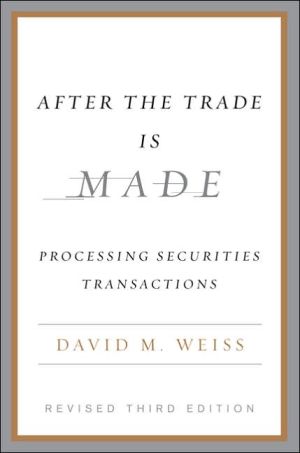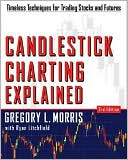Capital Markets: Institutions and Instruments
Capital Markets: Institutions and Instruments, 4/e offers the most comprehensive capital market coverage available. It covers the instruments, the players, and the principles of valuation with an excellent blend of theory and practice. Topics include Overview of Market Participants and Financial Innovation, Depository Institutions, Investment Banking Firms, Stock Options Market, The Theory and Structure of Interest Rates, and The Market for Foreign Exchange and Risk Control Instruments....
Search in google:
Capital Markets: Institutions and Instruments, 4/e offers the most comprehensive capital market coverage available. It covers the instruments, the players, and the principles of valuation with an excellent blend of theory and practice.Topics include Overview of Market Participants and Financial Innovation, Depository Institutions, Investment Banking Firms, Stock Options Market, The Theory and Structure of Interest Rates, and The Market for Foreign Exchange and Risk Control Instruments.Appropriate for corporate treasurers. Booknews In this college textbook Fabozzi (School of Management, Yale U.) and Modigliani (Sloan School of Management, Massachusetts Institute of Technology) describe the wide range of instruments for financing, investing, and controlling risk available in today's financial markets. In addition, the text provides an overview of the asset/liability management issues faced by major institutional investors and the strategies they employ. The third edition contains the most current coverage; specific updates since publication of the second edition in 1996 are not defined. Annotation c. Book News, Inc., Portland, OR (booknews.com)
The revolution that swept through the world financial markets was aptly described in 1985 by a noted economist, Henry Kaufman:\ \ If a modern-day Rip Van Winkle had fallen asleep twenty years ago, or for\ that matter even ten years back, on awakening today, he would be astonished\ as to what has happened in the financial markets. Instead of a world of iso-\ lated national capital markets and a preponderance of fixed-rate financing,\ he would discover a world of highly integrated capital markets, an extensive\ array of financing instruments, and new methods of addressing market risk.\ \ The purpose of this book is to describe the wide range of instruments for financing, investing, and controlling risk available in today's financial markets. New financial instruments are not created simply because someone on Wall Street believes that it would be "fun" to introduce an instrument with more "bells and whistles" than existing instruments. The demand for new instruments is driven by the needs of borrowers and investors based on their asset/liability management situation, regulatory constraints (if any), financial accounting considerations, and tax considerations. For these reasons, to comprehend the financial innovations that have occurred and are expected to occur in the future, a general understanding of the asset/liability management problem of major institutional investors is required. Therefore, in addition to coverage of the markets for all financial instruments, we provide an overview of the asset/liability management issues faced by major institutional investors and the strategies they employ.\ We believe that the coverage provided inthis book on the institutional investors and financial instruments is as up-to-date as possible in a market facing rapid changes in the characteristics of the players and those making the rules as to how the game can be played. New financial instruments are introduced on a regular basis; however, armed with an understanding of the needs of borrowers and institutional investors and the attributes of existing financial instruments, the reader will be able to recognize the contribution made by a new financial instrument.\ The first edition of this book was published in 1992. At the time, the book deviated in several significant ways from the traditional capital markets textbooks, notably in its coverage of derivative markets (futures, options, swaps, etc.). These markets are an integral part of the global capital market. They are not—as often categorized by the popular press and some of our less-informed congressional representatives and regulators—"exotic" markets. These instruments provide a mechanism by which market participants can control risk—borrowers can control borrowing costs and investors can control the market risk of their portfolio. It is safe to say that without the derivative markets, an efficient global capital market would be impossible. In addition, it is important to appreciate the basic principles of options not only as a stand-alone instrument, but because many financial instruments have embedded options. Also, the liabilities of many financial institutions contain embedded options. Thus, it is difficult to appreciate the complex nature of assets and liabilities without understanding the fundamentals of option theory.\ Although we recognize that many colleges offer a specialized course in derivative markets, our purpose in the first edition was not to delve deeply into the various trading strategies and the nuances of pricing models that characterize such a course. Instead, we provided the fundamentals of the role of these instruments in financial markets, the principles of pricing them, and a general description of how they are used by market participants to control risk.\ A special feature of the book at the time was the extensive coverage of the mortgage market and the securitization of assets. Asset securitization refers to the creation of securities whose collateral is the cash flow from the underlying pool of assets. The process of asset securitization is radically different from the traditional system for financing the acquisition of assets. By far the largest part of the securitized asset market is the mortgage-backed securities market, where the assets collateralizing the securities are mortgage loans. Securitized assets backed by non-real estate mortgage loans were a small but growing part of the market at the time of the publication of the first edition. Now they are a major sector of the capital market where financial and non-financial corporations can raise funds.\ Another key feature of this book was its emphasis on the role played by foreign investors in the US. market. Although the bulk of this book covers the US. financial markets, we discuss other mayor financial markets throughout.\ Finally, when we decided on the topics to cover in this book we discriminated between what belongs in a course on capital markets and what is the province of investment management. Oftentimes, because the needs of institutional investors dictate the need for financial instruments with certain investment characteristics or for a particular strategy employing a capital market instrument, we had to cross the line. The approach we took in this book makes it adaptable for a course in investment banking and as a supplement for a derivative markets course.\ That was our thinking in the first edition of the book. We must admit when the publisher Prentice Hall sent the initial drafts of the manuscript to ten reviewers, the reviews were mixed. Half thought that the book was so substantially different from what was traditionally taught in a capital markets or financial markets and institutions course that it would be an error for Prentice Hall to publish the book. The other five reviewers strongly endorsed the book as a major contribution and a blueprint as to how capital markets courses would be taught in the future. Of course, Prentice Hall did publish the book in 1992, and in 1996 published the second edition.\ Our model or blueprint has been followed by other textbook writers since the mid1990s. So, the unique features we claimed regarding the first edition and second edition are now common in other textbooks. However, we believe that our coverage and perspective with respect to key market sectors is still unique.
Ch. 1 Introduction 1Ch. 2 Overview of market participants and financial innovation 19Ch. 3 Depository institutions 39Ch. 4 Insurance companies 62Ch. 5 Asset management firms 74Ch. 6 Investment banking firms 100Ch. 7 Primary and secondary markets 115Ch. 8 Risk and return theories : I 143Ch. 9 Risk and return theories : II 166Ch. 10 Introduction to financial futures markets 189Ch. 11 Introduction to options markets 214Ch. 12 Introduction to swaps, caps, and floors markets 242Ch. 13 Common stock market : I 251Ch. 14 Common stock market : II 271Ch. 15 Stock options market 298Ch. 16 The market for stock index products and other equity derivatives 316Ch. 17 The theory and structure of interest rates 345Ch. 18 Valuation of debt contracts and their price volatility characteristics 371Ch. 19 The term structure of interest rates 393Ch. 20 Money markets 415Ch. 21 Treasury and agency securities markets 432Ch. 22 Corporate senior instruments markets : I 453Ch. 23 Corporate senior instruments markets : II 465Ch. 24 Municipal securities markets 486Ch. 25 The residential mortgage market 499Ch. 26 The market for residential mortgage-backed securities 514Ch. 27 Market for asset-backed securities 544Ch. 28 Commercial mortgage loans and commercial mortgage-backed securities 558Ch. 29 International bond markets 567Ch. 30 Market for interest rate risk transfer vehicles : exchange-traded products 578Ch. 31 Market for interest rate risk transfer vehicles : OTC instruments 599Ch. 32 Market for credit risk transfer vehicles : credit derivatives and collateralized debt obligations629Ch. 33 The market for foreign exchange and risk control instruments 649Index 669
\ BooknewsIn this college textbook Fabozzi (School of Management, Yale U.) and Modigliani (Sloan School of Management, Massachusetts Institute of Technology) describe the wide range of instruments for financing, investing, and controlling risk available in today's financial markets. In addition, the text provides an overview of the asset/liability management issues faced by major institutional investors and the strategies they employ. The third edition contains the most current coverage; specific updates since publication of the second edition in 1996 are not defined. Annotation c. Book News, Inc., Portland, OR (booknews.com)\ \








